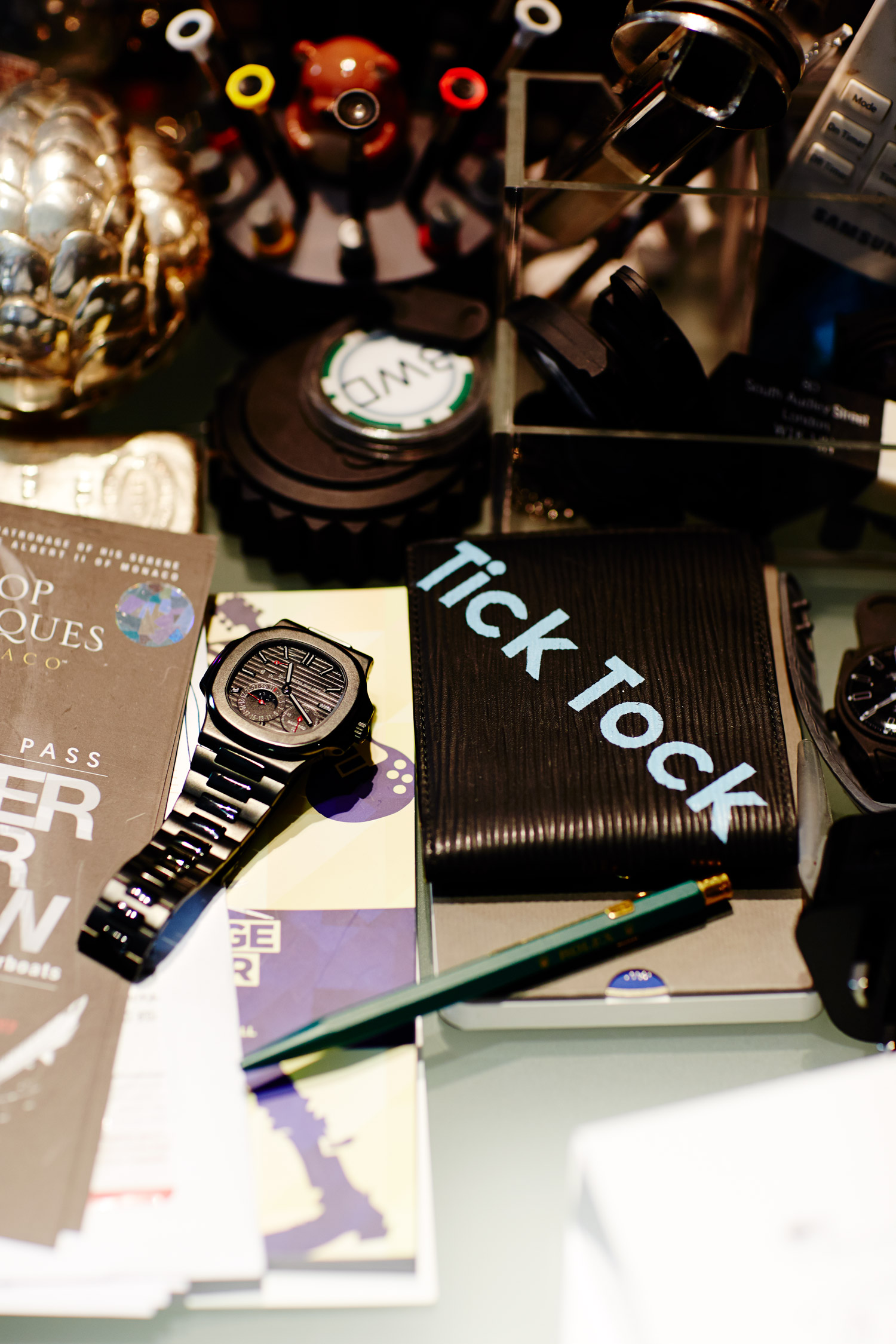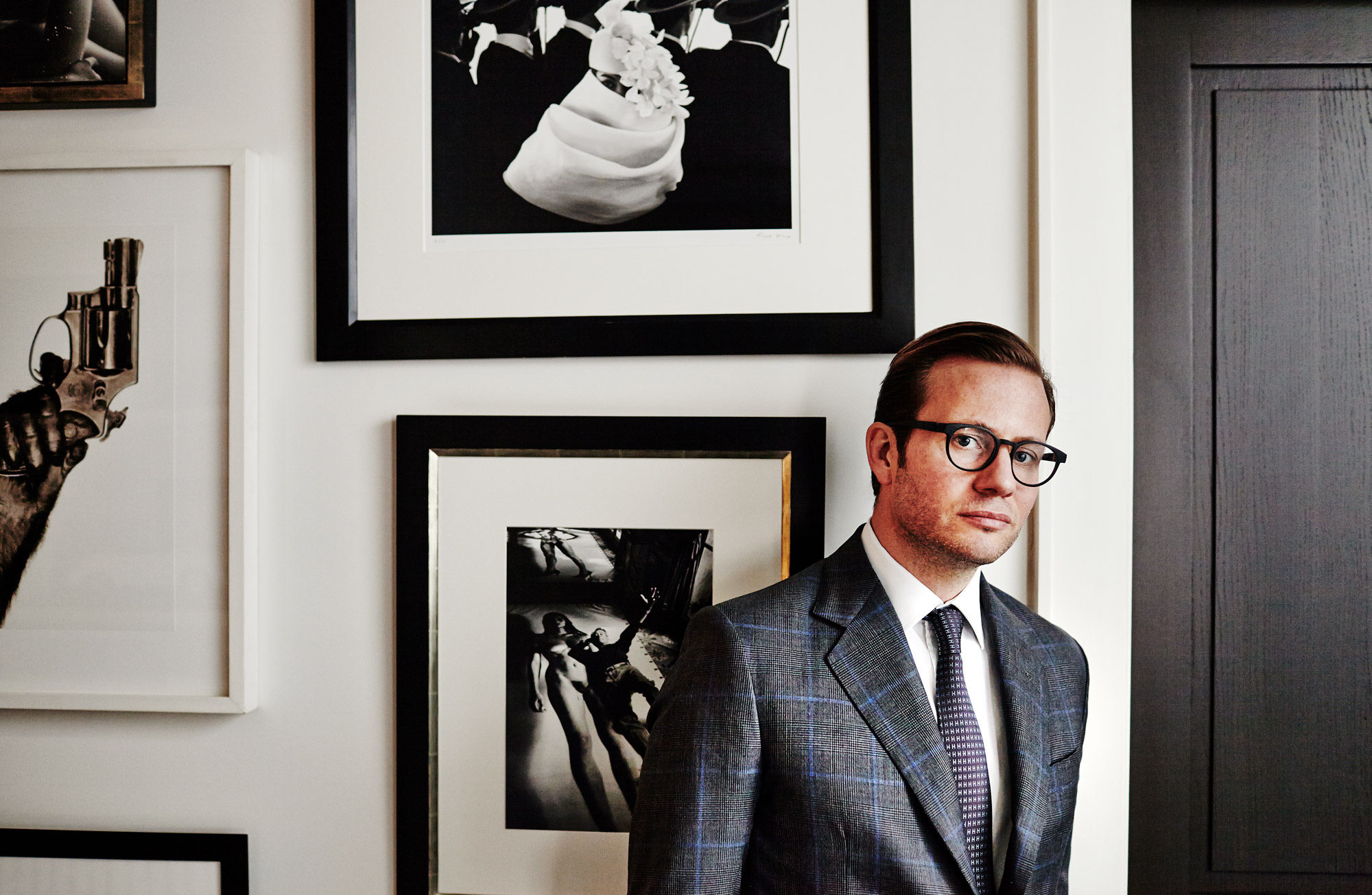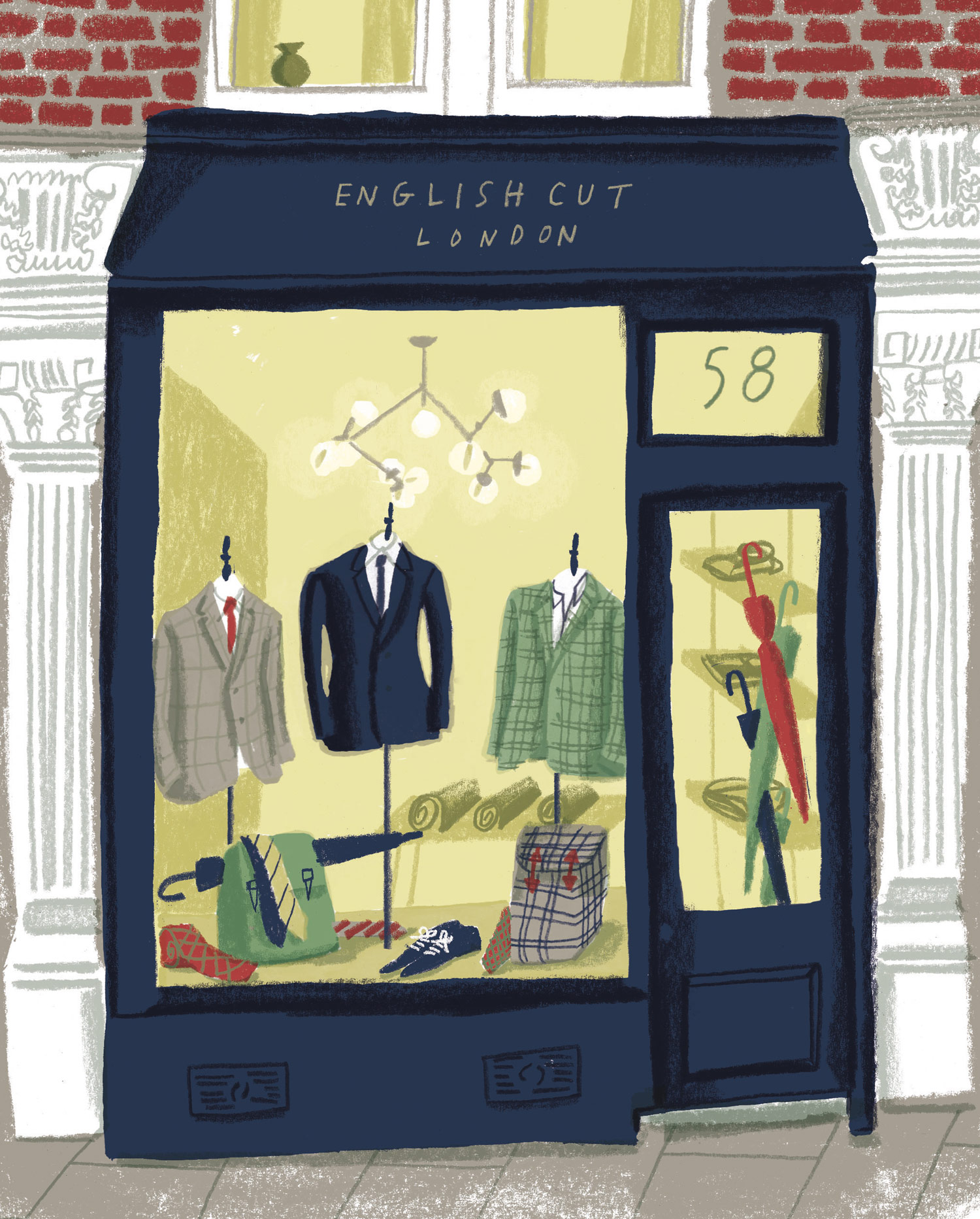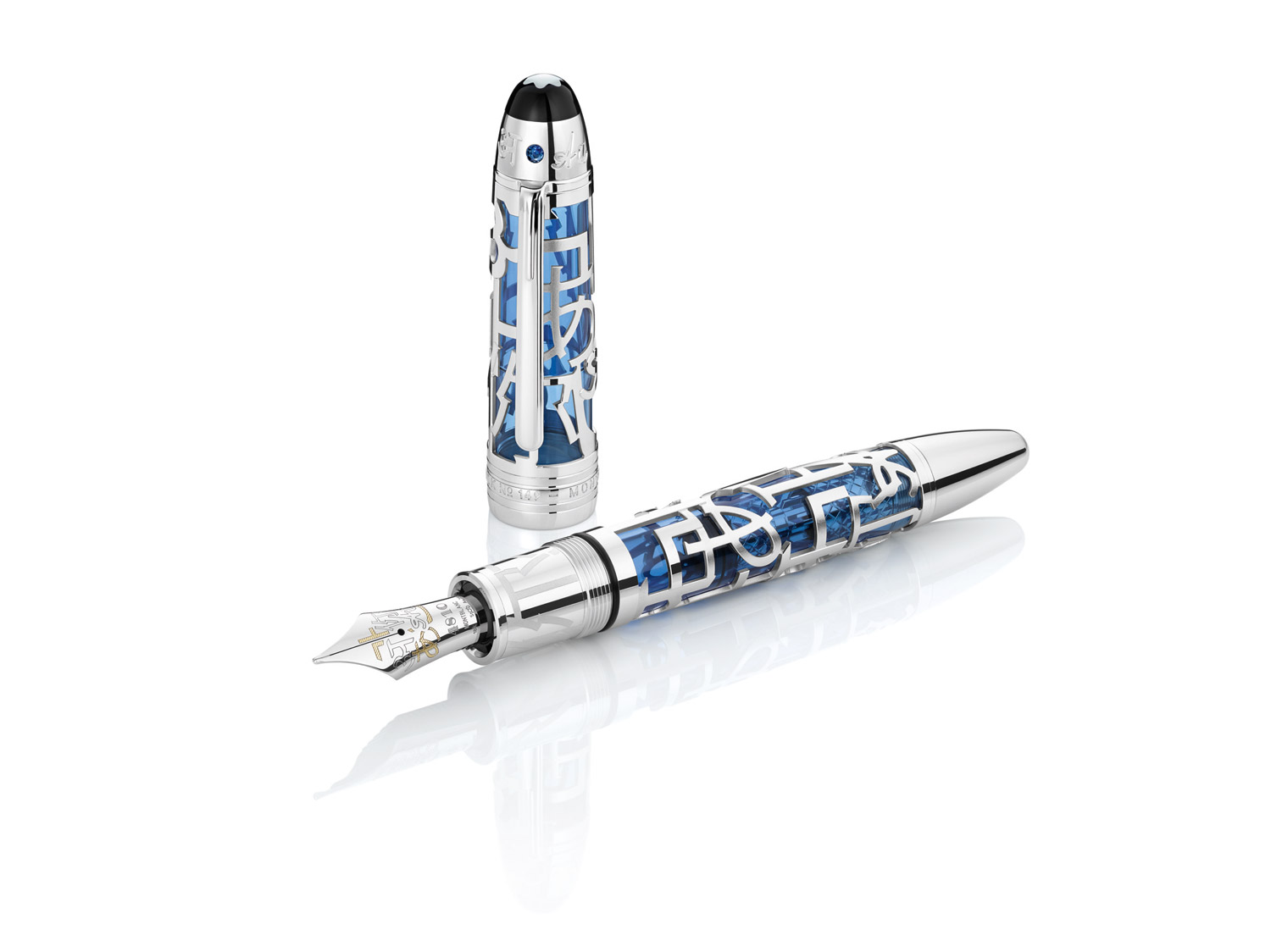The only clue that this five-floor Mayfair townhouse on London’s South Audley Street conceals the HQ of Bamford Watch Department is the discreetly blacked-out door, handle and all. After being buzzed into “the hive”, as it’s known internally, you’re briefly trapped in a security airlock, a necessary precaution given the one-of-a-kind timepieces by the likes of Rolex, Patek Phillippe and Audemars Piguet that are being customised therein. And especially when you factor in founder George Bamford’s kleptomaniacal design philosophy.
“I call it ‘got to want to nick it’,” he explains in a well-appointed upstairs room that feels like a cross between a magpie member’s club and Sir Paul Smith’s office, jam-packed with technicolour memorabilia ranging from vintage Rolex shop signs sourced from Italy, to Japanese toys and personalised jars of the Midlands’ finest yeast extract, Marmite. “I show you a watch, and you go, ‘I can’t live without that … ’ Got to want to nick it.”
Not to suggest for a millisecond that any of his eclectic collection was ill-gotten, but that motto applies as much to Bamford’s own sartorial choices as his clients’: at his English Cut bespoke fitting, he walked out with two more made-to-measure suits. (Just to be clear, he didn’t nick them.) “I’m quite jaded in this world,” he admits. “So to go in there and say, ‘I like the look of that, and the fabric … ’ I think English Cut is going to be a new favourite.” Not least because the store is off the beaten track of Savile Row: “I walked down Chiltern Street and I went, ‘Yeah, I like it here.’” When it comes to shopping trips, it’s legitimate to say that George Bamford is someone who constantly seeks alternative routes.
For Bamford, customisation is not just a path to better fit or quality, but an avenue to express your personality – which, in his case, is continually interrogative, maverick, even radical. Take his English Cut suit, which was acquired for the summer and thus called for a lightweight fabric that would normally be concomitantly light in colour. Instead, Bamford plumped for an airy Super 130s wool in more typically wintry grey-and-navy Prince of Wales check. “Why do I have to have a light colour for the summer?” he says. “Why not go for something winter-looking? Why conform? Why not be different? Conforming is boring. When you conform, you’ve lost your personality. You’ve lost you.”
Son of billionaire Lord Anthony Bamford and scion of the JCB construction dynasty, the well-spoken and similarly mannered 36-year-old wears his suits as lightly as his comfortable upbringing. “I’m very much about a relaxed feel: unstructured shoulders,” he says. “I don’t want to feel like I’ve got a rod up my arse.” His old tailor was the late Brian Russell, an “amazing guy” and a contemporary of Tom’s at Anderson & Sheppard, who a few years before his death established his own firm on Sackville Street, just off the Row. Bamford then travelled even further afield to Caraceni in Milan, although his suits are not a characteristically slim Italian fit; their major attribute is that they casually dismiss the at-attention rigidity of the military-influenced British style. Nor is Bamford’s daily uniform always suited-and-Chelsea booted; he’s only recently converted to head-to-toe tailoring, at his wife’s behest. “Most days it’s a blazer, jeans and predominantly trainers,” he says. “Now, for the last two, three years I’ve been wearing suits. But I’m going to have them how I want to have them – not how I’m told I should.”
“Why conform? Why not be different? Conforming is boring. When you conform, you’ve lost your personality. You’ve lost you”
Necessarily anachronistic, the world of mechanical watches is by its nature conservative, as befits an obsolete technology now valued more like art than for any utilitarian value. It’s also broadcast rather than conversation: every year at Baselworld or Salon International de la Haute Horlogerie in Geneva, the brands present their new designs as fait accompli to be taken or left. Many are imperceptibly minor tweaks to iconic models that are considered by purists to be practically sacrosanct. With his libertarian why-nots and customer-driven customisation, Bamford is something of an anarchist. Not that he would be so bold as to call himself a revolutionary: “Am I massively changing the watch world? No. But am I letting people have their take? Yes.”
The idea for Bamford’s “niche little business” presented itself not long after he was gifted a Rolex Daytona – a grail watch for many – for his 21st birthday. For too many: he proudly wore it to a dinner party, only to find that several other guests were sporting the exact same model. Determined to make a watch that nobody else had, he dug around in the JCB research and development department until he unearthed DLC or diamond-like carbon, an anti-friction coating more commonly used to lubricate drill parts. He bought an old, bracelet-less Rolex Submariner and GMT Master, blacked them out and attached fabric Nato straps – green camouflage for him, blue with grey stitching for his father as a thank you for the ubiquitous Daytona (which he still has). Over one summer, he received 25 orders for something he’d never intended to sell.
Bamford’s fascination with watches started earlier, when aged 12 he received for Christmas a knackered Breitling Navitimer that his parents picked up for £200. “I always used to take things apart – TVs, anything – and put them back together again,” he recalls. “It’s how my brain works. The watch took me a lot longer than usual.” Enamoured, he wanted to become a watchmaker, even though his first attempt was unpromising: “I took the hands off, broke the glass … There are so many things wrong with that watch now.” (Yes, he still has that one, too.) His other love was photography; he took his O-level in the subject early at Ampleforth College in Yorkshire and later worked under John Swannell, Antoine Verglas and Rankin. That led him indirectly to studying design at Parsons in New York, where he also gophered for fashion houses. There, he graduated to a flea-market trader in vintage timepiec es, which in some respects he still is: “Except I buy them, but never trade out. So, really, I’m just a hoarder.”
While vintage watches are covetable, Bamford realised soon after delivering those first orders – and failing to turn a profit – that old-timers were too unreliable, repairs too frequent and parts too scarce to form the foundation of a solid business. So he turned to modern watches, predominantly Rolex (about 80 to 90 per cent). Bamford the man and Watch Department gravitate towards Rolex because so many of us do: the most powerful watch brand on the planet (64th brand overall, according to Forbes) is also the one to which most buyers aspire sooner or later – as that fateful dinner party proved.


“Rolex has a value around the world,” says Bamford. “I once asked a military man what watch he would want on his wrist, and he said a Rolex, because wherever he was, he could trade it to get a taxi or a plane out of a country.” The Bamford brand, though, which shares space on the dials of its products with that of the original manufacturer, carries a not-insignificant value of its own: at £12,500, a Bamfordised Rolex Submariner, for example, will set you back roughly double the price of an off-the-shelf one. On holiday in Sardinia a few years ago, Bamford and his father were offered counterfeits of their own wares by an unsuspecting peddler: proof that the name is gaining traction for more than just diggers.
Rolex also has a “perfection” in its designs that Bamford, who also collects classic cars, likens to the glacial evolution of a Porsche: “‘What have you done to the new model?’ ‘Oh, we’ve changed the lights.’ They perfect it, perfect it, perfect it.” The canonical status of Rolex explains why in some circles Bamford is regarded with no exaggeration not just as an anarchist, but an “antichrist”: the notion of a website that lets you change the colour scheme or compose your own text, as the Bamford Watch Department’s does, is positively heretical. To say nothing of adding a cartoon character like Mickey Mouse, Snoopy or Popeye to the dial for very special – and extremely limited – editions.
“I hope I’m not disrespectful,” says the unfailingly polite Bamford. “I come with absolute love.” He treats watches not just with the reverence that they deserve, but also that they need in order to take a lick of DLC or MGTC (military grade titanium coating) on their intricate components and keep on ticking accurately. Prospective customers will be relieved to hear that, rather than wreak havoc with his tiny screwdriver, Bamford employs three highly skilled in-house watchmakers at the hive and a further three in New York, with a dial facility just outside London and a bezel workshop in Switzerland. He also provides a five-year guarantee to replace the voided manufacturer’s warranties.
Car companies are more on board with personalisation than watch brands: Bamford Watch Department was partly inspired by Bentley’s extensive Mulliner customisation service, and Ferrari boasts its own personalisation programme. But some marques in both sectors remain understandably reluctant to go all the way down the customisation road. Do so and you place your carefully cultivated reputation as a bastion of good taste at the mercy of your customer’s whims, which may or may not align with your brand values, but will nevertheless bear your imprimatur – however ghastly the result.

“You’re going to ask me if there’s a watch I wouldn’t do,” says Bamford, preempting the question, before pointing to a photo of a pink and green model that is unorthodox even by his standards. “Throughout the whole conversation, I said, ‘Please don’t do this, it won’t work.’ And the client said, ‘No, I want it.’ So we did it.” Unexpectedly happy with the result after some initial teething problems, Bamford visited the client’s office, where he saw that everything was pink and green from the company’s livery down to his two-tone business card. It was a timely reminder that personalisation is profoundly personal: “Do I think sometimes it works and sometimes it doesn’t work? Fuck yeah. Do I agree 100% with everyone’s taste? No. But it’s their taste. So it always suits them.” The Bamford Watch Department site promises, “If you can imagine it, we can create it.”
It’s axiomatic in business that the customer is always right; Bamford inherited another motto from his father and grandfather: “Our customers can get on without us; we can’t get on without them.” Bamford Watch Department’s 40-odd stockists worldwide don’t include the typical watch boutiques, but do include the likes of Dover Street Market in London and Tokyo, which reflects both the unique position of the brand and its founder’s attitude to customer service. “It’s like car dealers: you go in and they’ve already got you,” he says. “But they don’t care. I think fashion concept stores do care because they’re trading on their reputation. It’s not only watch boutiques where you don’t get that caressing and looking-after: it’s mass-market luxury shops. You’re not feeling special.”
Really, watch brands should be thanking Bamford for helping their products remain relevant and covetable. A sneakerhead with a “stupid amount” of trainers who also followed in the customising footsteps of Nike ID, he collaborates with bleeding-edge Japanese streetwear brands such as Neighbourhood and Mastermind, plus hype-generating multi-hyphenate creatives such as designer-musician-producer Hiroshi Fujiwara and designer-director-marketer Darren “DRx” Romanelli (“a brother from another”). Fellow deconstructor-reconstructors, they “chat, from shoes to clothes to cars”.
The Bamford family motto is jamais content, which translates as “never satisfied”. Testament to that restless spirit is the Bamford Grooming Department, a range of colognes, moisturisers and steel-and-carbon fibre manicure sets. And the Bamford Cycle Department, putting the “spoke” in bespoke performance bikes after Bamford couldn’t locate a custom shop that could sate his taste for a frame that didn’t have other names splashed all over it. Next he’s turning his attention surfeit to accessories such as a precisely engineered watch roll in aluminium and neoprene – inspired by a bicycle pump – that slides smoothly open with a shh: “It makes me smile.” He hasn’t let his dyslexia stop him from co-writing a crime novel, A Strange Way to Die, with his mother-in-law Ros Pearl; his own mother Carole has organically grown the Daylesford brand – named after their Oxfordshire country estate – into an empire.
What jamais content doesn’t mean is the endless acquisition of rare, expensive stuff, or being dissatisfied with a merely factory-spec Rolex Daytona. “Possessions don’t make you happy,” says Bamford, who draws more pleasure from discovering than owning. “Your only legacy is your family. I’ve got three children; my things are theirs to get rid of.” With the exception perhaps of his priceless 1968 Rolex Milgauss: “I wore it the day I got engaged, the day I got married, for the birth of each of my children. It holds those parts of my life; it has a soul, a spirit.” Sentimental value is the one thing that’s impossible to replicate.



